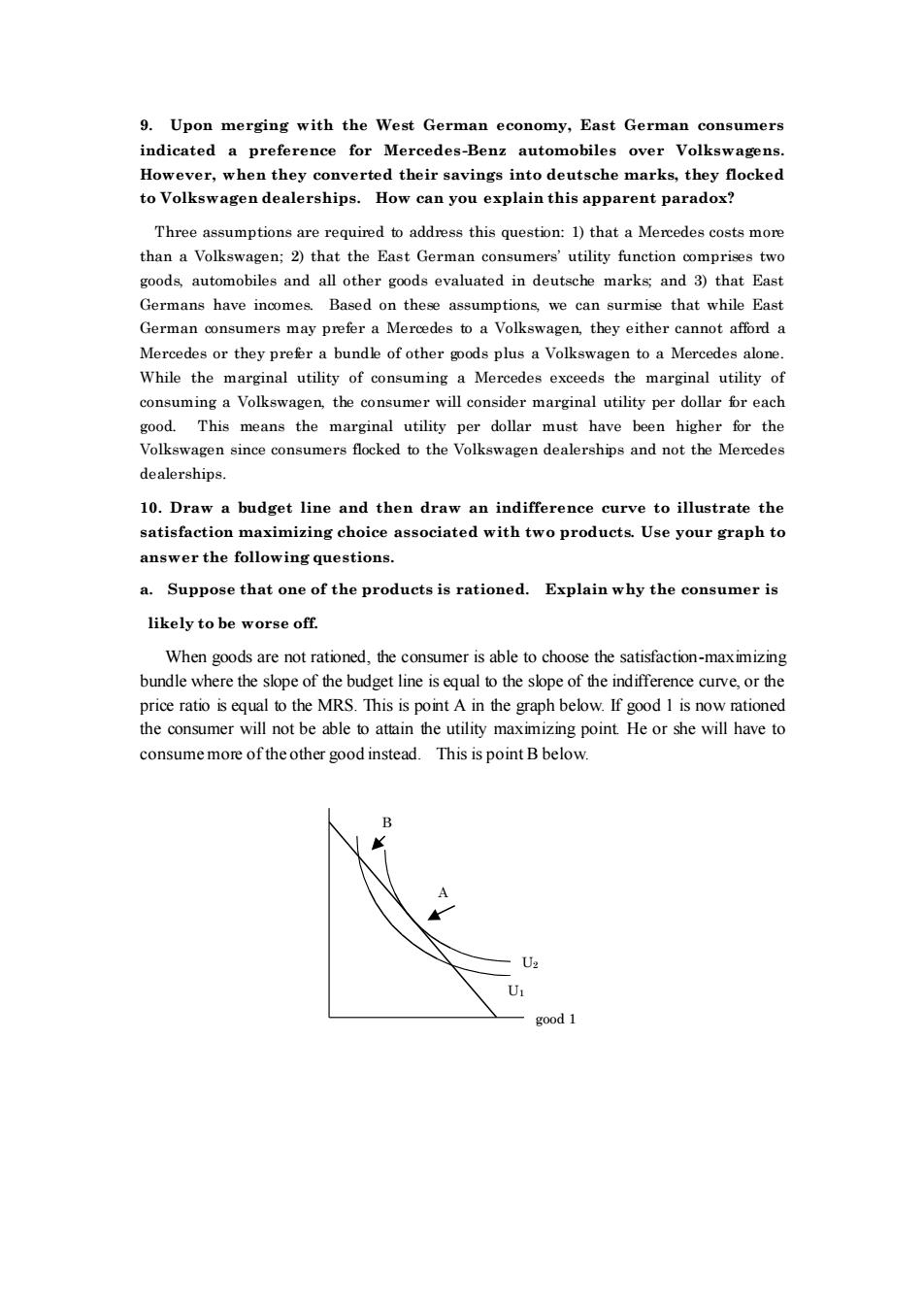正在加载图片...

9.Upon merging with the West German economy,East German consumers indicated a preference for Mercedes-Benz automobiles over Volkswagens However when they converted their savings into deutsche marks they flocked to Volkswagen dealerships.How can you explain this apparent paradox? Three assumptions are required to address this question:1)that a Mercedes costs more than a Volkswagen;2)that the East German consumers'utility function comprises two goods,automobiles and all other goods evaluated in deutsche marks and 3)that East Germans have incomes.Based on these assumptions,we can surr mise that while east they eithe anno Mercedes or they prefer a bundle of other goods plus a Volkswagen to a Mercedes alone While the marginal utility of consuming a Mercedes exceeds the marginal utility of consuming a Volkswagen,the consumer will consider marginal utility per dollar for each his means theni pet ollar muat have bon higher fr the sinc on wagen dealership dealerships. 10.Draw a budget line and then draw an indifference curve to illustrate the satisfaction maximizing choice associated with two products.Use your graph to answer the following questions. a.Suppose that one of the products is rationed.Explain why the consumer is likely to be worse off. When goods are not rationed,the consumer is able to choose the satisfaction-maximizing bundle where the slope of the budget line is cqual to the slope of the indifference curveor the ual to the MRS.This no ratione not be able to attain the utility maximizing point He or she will have to consume more of the other good instead.This is point B below. 9. Upon merging with the West German economy, East German consumers indicated a preference for Mercedes-Benz automobiles over Volkswagens. However, when they converted their savings into deutsche marks, they flocked to Volkswagen dealerships. How can you explain this apparent paradox? Three assumptions are required to address this question: 1) that a Mercedes costs more than a Volkswagen; 2) that the East German consumers’ utility function comprises two goods, automobiles and all other goods evaluated in deutsche marks; and 3) that East Germans have incomes. Based on these assumptions, we can surmise that while East German consumers may prefer a Mercedes to a Volkswagen, they either cannot afford a Mercedes or they prefer a bundle of other goods plus a Volkswagen to a Mercedes alone. While the marginal utility of consuming a Mercedes exceeds the marginal utility of consuming a Volkswagen, the consumer will consider marginal utility per dollar for each good. This means the marginal utility per dollar must have been higher for the Volkswagen since consumers flocked to the Volkswagen dealerships and not the Mercedes dealerships. 10. Draw a budget line and then draw an indifference curve to illustrate the satisfaction maximizing choice associated with two products. Use your graph to answer the following questions. a. Suppose that one of the products is rationed. Explain why the consumer is likely to be worse off. When goods are not rationed, the consumer is able to choose the satisfaction-maximizing bundle where the slope of the budget line is equal to the slope of the indifference curve, or the price ratio is equal to the MRS. This is point A in the graph below. If good 1 is now rationed the consumer will not be able to attain the utility maximizing point. He or she will have to consume more of the other good instead. This is point B below. good 1 U1 U2 A B